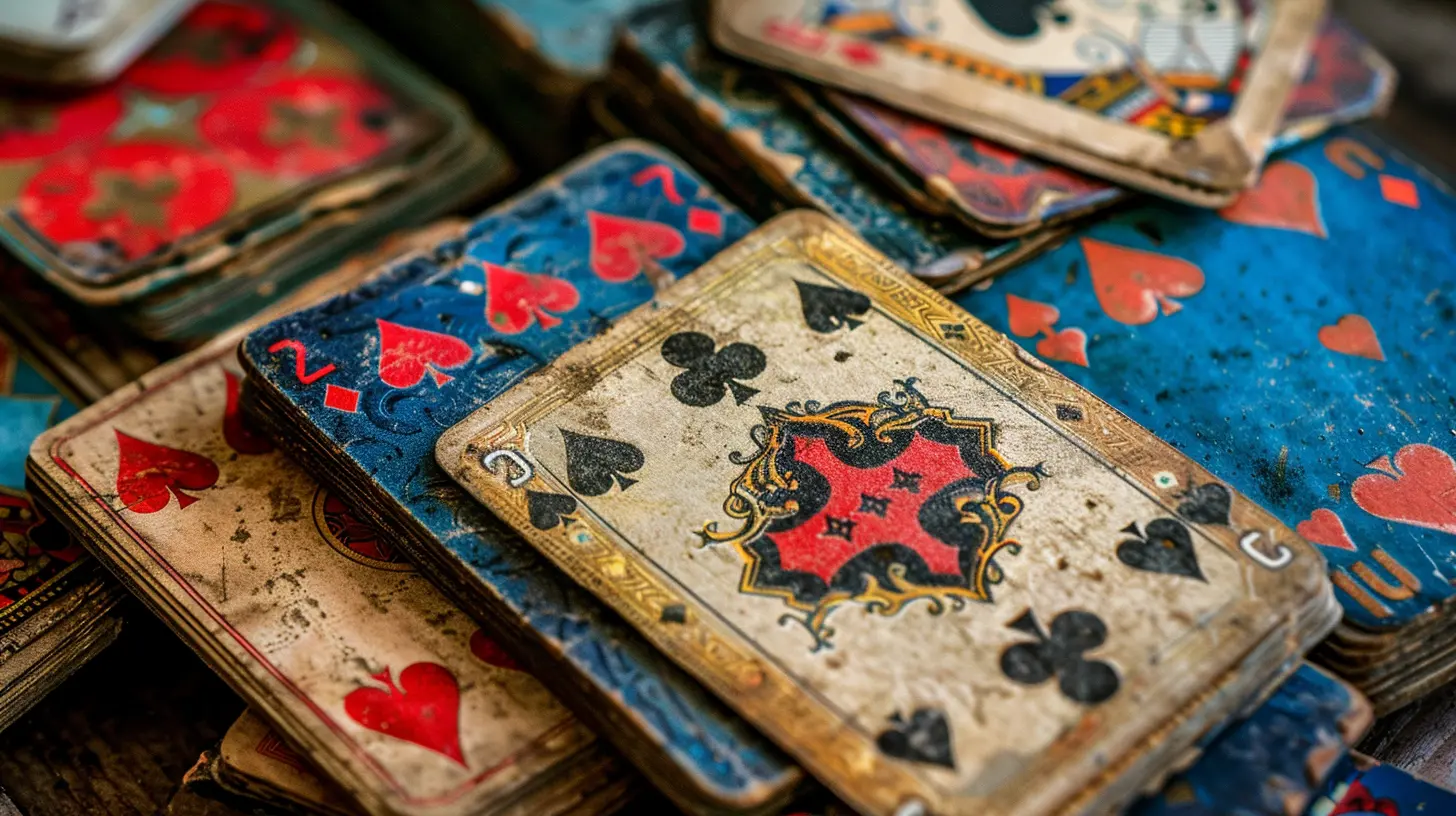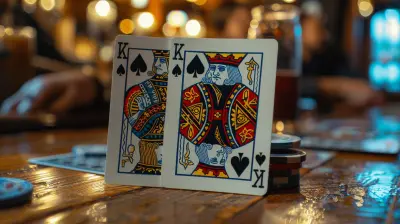From Solitaire to Rummy: Popular Card Games Explained
10 July 2025
When was the last time you held a deck of cards in your hands? Think about it—those neat, little rectangles have been the source of so much entertainment, bonding, and even a bit of friendly competition. Whether you're flying solo on a rainy afternoon or sitting at the table with your squad, card games have a way of pulling you in. And honestly, there's something timeless about them, right?
In this guide, we're diving deep into some of the most popular card games out there—from the calming, meditative world of Solitaire to the fast-paced, strategic thrills of Rummy. So, shuffle up, settle in, and let’s get to know these classics a little better. Who knows, you might find a new favorite!
The Charm of Card Games: A Quick Look Back
Card games have been around for centuries. Originating from ancient China and spreading across the globe, they've evolved into countless variations, cultures, and skill levels. But what makes card games so addictive?It’s that perfect blend of strategy, luck, and interaction. Sometimes you're trying to outsmart your opponent. Other times, you're totally at the mercy of the cards you're dealt. And isn't that just like life?
Let’s start with the all-time solo favorite—Solitaire.
Solitaire: The One-Player Classic
What Is Solitaire?
Solitaire is a one-player card game. Yep, you versus the cards. Sounds lonely? Not really. Think of it as a strategy puzzle wrapped in patience and planning. The most well-known version is "Klondike," but variations like Spider, FreeCell, and Pyramid also have loyal fans.How Do You Play?
In classic Solitaire, the goal is to move all cards into foundation piles sorted by suit in ascending order (Ace to King). The layout includes seven tableau columns, a draw pile, and the four foundation spaces.You flip cards, build alternating color sequences in descending order, and gradually move them to the foundations.
Why Is It So Addictive?
For one, it’s easy to learn but hard to master. Plus, it offers a sense of accomplishment—like solving a tricky puzzle. And hey, you can play it offline, online, on your phone, or even with a physical deck. It's the ultimate "me-time" game.
Rummy: A Competitive Crowd-Pleaser
What Is Rummy?
Rummy is a group of matching-card games, but the most common version involves forming sets (three or four cards of the same rank) and runs (three or more cards in sequence of the same suit).Unlike Solitaire, Rummy is very much a social game. If Solitaire is your quiet, introspective friend, Rummy is the extrovert at the party.
Basic Rules of Classic Rummy
- 2 to 6 players- Each player is dealt a hand (usually 10 cards)
- Players take turns drawing and discarding
- The goal is to form valid sets and runs before your opponents do
When you’ve created a hand that meets the criteria, you declare it—and if it’s valid, you win!
Variations of Rummy
Ready for a twist? There are tons of Rummy variations:- Gin Rummy – usually two-player, faster-paced
- Indian Rummy – played with 13 cards and commonly seen in tournaments
- Kalooki Rummy – popular in the Caribbean and UK
- Rummy 500 – where scoring plays a bigger role
Each version brings its unique spice to the table, some with jokers, some without, but all equally thrilling.
Poker: The Mind Game with a Poker Face
Alright, you can't talk about card games and skip Poker. Poker isn't just a game; it's an attitude.What Makes Poker Special?
- It's not only about the cards you hold but also the mind games you play.- Bluffing, reading opponents, and strategic betting make it stand out.
- Popular versions include Texas Hold’em, Omaha, and Seven-Card Stud.
Why People Love It
Poker has that Vegas glow. Whether you’re just learning or aiming to go pro, the game is dynamic. There's money to be won, but the real thrill? Outsmarting everyone at the table.Hearts: The Game of Avoidance
Hearts is one of those games that sounds simple but leaves you scratching your head. The goal? Avoid certain cards. That’s right—this game isn’t about what you collect, but what you dodge.How It Works
- 4 players- Played with a standard 52-card deck
- Avoid winning tricks that contain hearts or the dreaded Queen of Spades
Each round you “pass” cards to opponents, and just when you think you’ve dodged a bullet—bam! Someone shoots the moon.
It’s sneaky, strategic, and endlessly entertaining.
Spades: Partnership Goals
Spades is like the cool cousin of Hearts. You play in teams, and instead of avoiding cards, you’re trying to win as many “tricks” as possible based on a bid you make before playing.Why It’s Fun
- You play with a partner, which means chemistry and coordination matter.- Bidding adds a prediction element.
- It’s not just about the cards—it’s about how you play them.
Think chess meets cards with a splash of sass.
Crazy Eights: The Basis of UNO
You know UNO, right? That colorful card game that breaks friendships? Well, Crazy Eights is its ancestor.Gameplay Basics
- Played with a regular deck- The goal is to be the first to get rid of all your cards
- Eights are “wild,” letting you change the suit
Simple? Yes. Boring? Never. Especially when you toss down an 8 and shake up the game completely.
Go Fish: The Family Favorite
Perfect for younger audiences or total beginners, Go Fish is all about asking for cards and making matches.- “Do you have any threes?”
- “Go fish!”
It’s a great introduction to matching games and teaches memory skills—and let’s be honest, even grown-ups enjoy it now and then.
Bridge: For The Strategist
If Rummy is energetic and Poker is psychological, Bridge is intellectual. This four-player game is a blend of bidding, strategy, and communication.Why It’s So Respected
Bridge isn’t easy. It takes time to learn and even more to master—but that’s what makes it so respected in card-playing circles. Think of it as the chess of card games.War: The Pure Game of Chance
Talk about easy. War is the simplest of all card games. Two players reveal the top card of their deck—highest card wins. In case of a tie, it’s war (lay down additional cards).Is it strategic? Not at all. But it’s quick, fun, and perfect for when you just want to zone out and let fate decide.
Why Card Games Never Go Out of Style
There’s something almost magical about card games. They don’t need electricity, software updates, or fancy graphics. They’re low-tech, portable, and endlessly replayable. Plus, they adapt to your mood—solitary or social, competitive or casual.And let’s not overlook the nostalgia. Many of us learned our first card game from parents, grandparents, or that one cool uncle. Each game comes with memories and stories, passed down like secret tricks of the trade.
Tips to Enhance Your Card Game Experience
Feeling inspired to pick up those cards more often? Here are a few quick tips to make your card game sessions more enjoyable:1. Learn the Basics First
Don’t jump into complex strategies too quickly. Understand the core mechanics and build from there.2. Play With Friends
Card games shine brightest in company. Host a game night—it’s a great excuse to catch up and laugh.3. Try Online Versions
Many classic games have great digital versions. Perfect for when your regular crew isn’t around.4. Mix It Up
Don’t just stick to one game. Rotating between different classics keeps things fresh and exciting.Conclusion
From solo showdowns with Solitaire to the lively exchanges in Rummy, card games are more than just time-passers. They’re mind-stretchers, social connectors, and sometimes, even therapists! Whether you’re in the mood to flex your strategy muscles, test your luck, or just chill, there's a card game out there waiting for you.So, next time you're bored, stressed, or just want to connect with someone, pull out a deck. The magic's always in the cards.
all images in this post were generated using AI tools
Category:
Card GamesAuthor:

Madeleine McCaffrey
Discussion
rate this article
2 comments
Trinity McNeil
This article provides a concise overview of popular card games, from the classic Solitaire to the strategic Rummy. It's a great guide for both newcomers and seasoned players looking to explore familiar favorites!
October 21, 2025 at 3:24 PM

Madeleine McCaffrey
Thank you! I'm glad you found the guide helpful for both new and experienced players. Happy gaming!
Mila McLemore
Great article! I love how you broke down the classics like Solitaire and Rummy. It’s a perfect reminder of the fun and strategy card games bring to our lives!
July 14, 2025 at 3:18 AM

Madeleine McCaffrey
Thank you so much! I'm glad you enjoyed the breakdown and found it insightful. Card games truly bring us joy and strategy!


